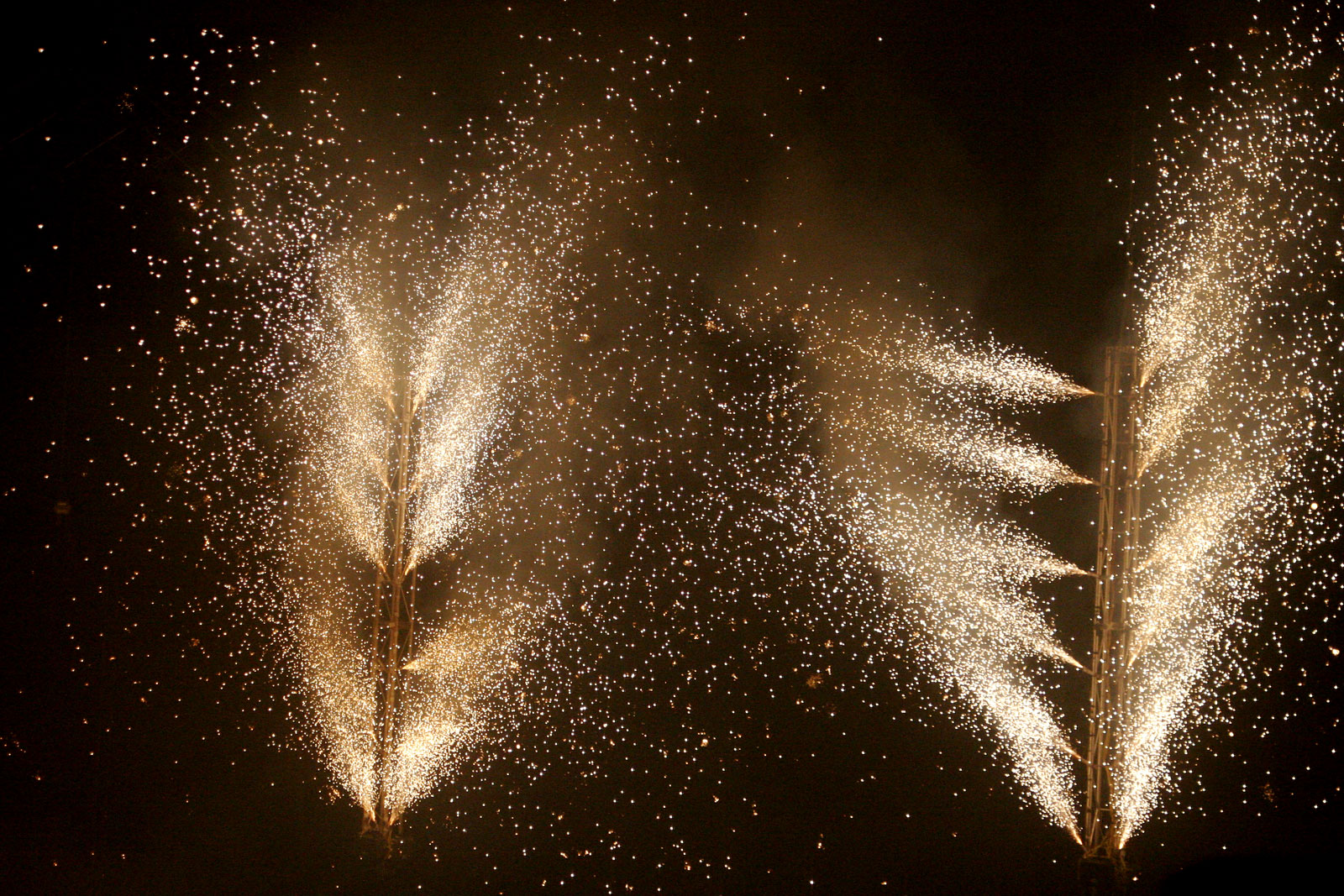
Pyrotechnics
Pyrotechnics is the science and craft of creating such things as fireworks, safety matches, oxygen candles, explosive bolts and other fasteners, parts of automotive airbags, as well as gas-pressure blasting in mining, quarrying, and demolition. This trade relies upon self-contained and self-sustained exothermic chemical reactions to make heat, light, gas, smoke and/or sound. The name comes from the Greek words pyr ("fire") and tekhnikos ("made by art").[1]
Improper use of pyrotechnics could lead to pyrotechnic accidents. People responsible for the safe storage, handling, and functioning of pyrotechnic devices are known as pyrotechnicians.
Explosions, flashes, smoke, flames, fireworks and other pyrotechnic-driven effects used in the entertainment industry are referred to as proximate pyrotechnics. Proximate refers to the pyrotechnic device's location relative to an audience. In the majority of jurisdictions, special training and licensing must be obtained from local authorities to legally prepare and use proximate pyrotechnics.
Many musical groups use pyrotechnics to enhance their live shows. Pink Floyd were innovators of pyrotechnic use in concerts. For instance, at the climax of their song "Careful with That Axe, Eugene", a blast of smoke was set off at the back of the stage. Bands such as the Who, KISS and Queen soon followed with use of pyrotechnics in their shows. Michael Jackson attempted using pyrotechnics in a 1984 Pepsi advertisement,[2] where a stray spark caused a small fire in his hair. German industrial metal band Rammstein are renowned for their incorporation of a large variety of pyrotechnics into performances, which range from flaming costumes to face-mounted flamethrowers. Nightwish, Lordi, Sabaton and Parkway Drive are also known for their vivid pyrotechnics in concert. Many professional wrestlers have also used pyrotechnics as part of their entrances to the ring.
Modern pyrotechnics are, in general, divided into categories based upon the type of effect produced or manufacturing method. The most common categories are:[3]
Various ingredients may be added to pyrotechnic devices to provide colour, smoke, noise or sparks. Special additives and construction methods are used to modify the character of the effect produced, either to enhance or subdue the effect; for example, sandwiching layers of pyrotechnic compounds containing potassium perchlorate, sodium salicylate or sodium benzoate with layers that do not creates a fountain of sparks with an undulating whistle.
In general, such pyrotechnic devices are initiated by a remotely controlled electrical signal that causes an electric match, or e-match, to produce ignition. The remote control may be manual, via a switch console, or computer controlled according to a pre-programmed sequence and/or a sequence that tracks the live performance via stage cues.
Consumer pyrotechnics[edit]
Consumer pyrotechnics are devices readily available for purchase to the general public with little or no special licensing or training. These items are considered relatively low hazard devices but, like all pyrotechnics, can still be hazardous and should be stored, handled and used appropriately. Some of the most common examples of consumer pyrotechnics encountered include recreational fireworks (including whistling and sparking types), model rocket motors, highway and marine distress flares, sparklers and caps for toy guns. Pyrotechnics are also indirectly involved in other consumer products such as powder actuated nail guns, ammunition for firearms, and modern fireplaces. Some types, including bird scarers, shell crackers, whistle crackers and flares, may be designed to be fired from a 12-gauge pistol or rifle.